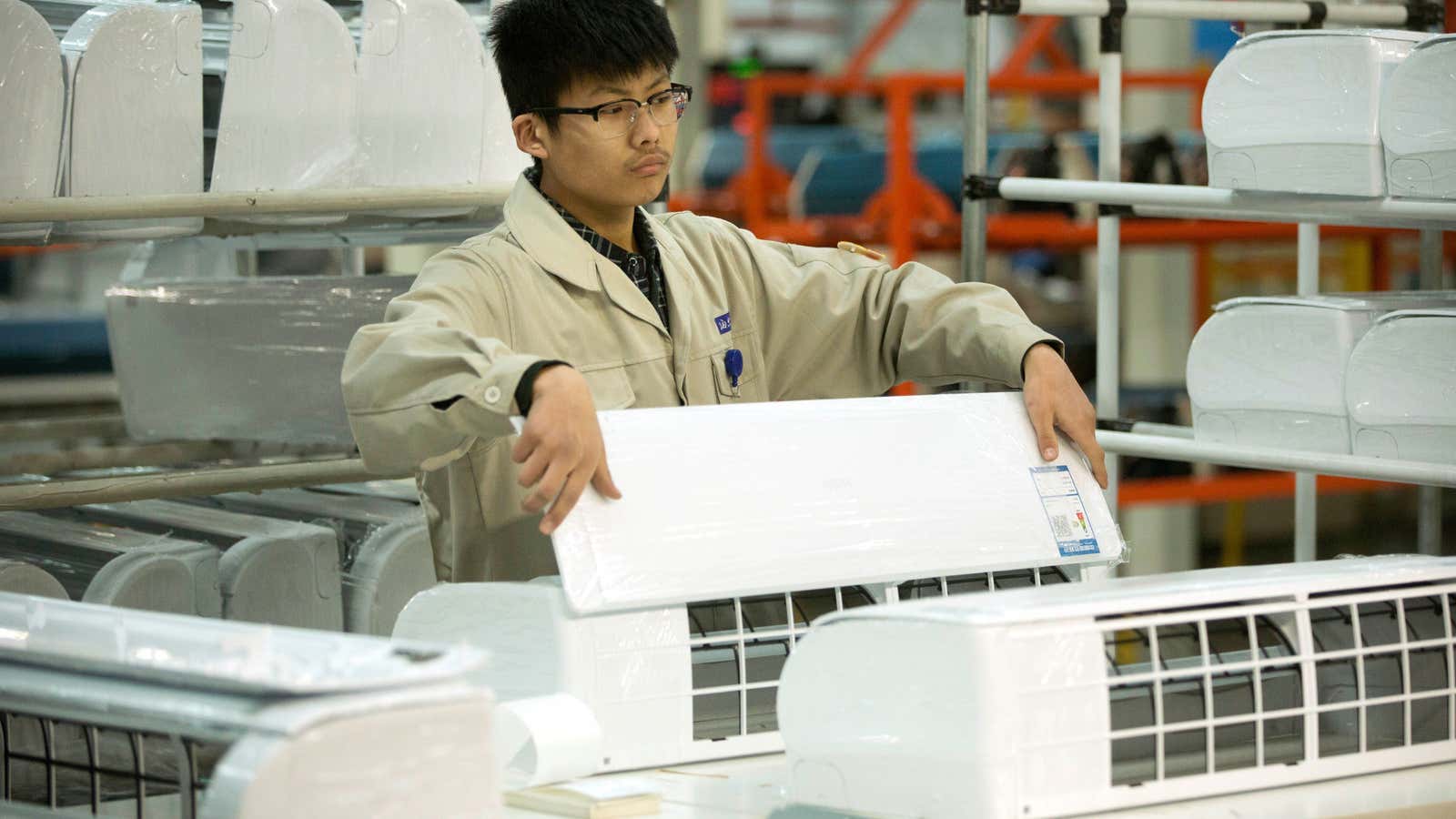In China, air conditioning used to be rare. But there are now more air conditioners in China than there are in any other country in the world, and sales continue to skyrocket, according to a report by the International Energy Agency.
Chins uses 68 times more electricity on cooling than it did in 1990, and that number continues to grow faster than anywhere else in the world.
At the moment, the US (with a population far smaller than China’s) still uses the most energy on air conditioning of any country in the world. As of 2016, 40% of all air-conditioning capacity is installed in the US, and its 328 million residents consume more energy for cooling than the 4.4 billion people living in all of Africa, Latin America, the Middle East, and Asia (excluding China) combined, according to the IEA report.
But the US will soon be overtaken by China, as the energy the US spends on air conditioning is now growing only moderately while China’s balloons.
China outpaces every country by far in this air-conditioning explosion, but A/Cs are also taking off in other hot places where they were previously rare; India, for example, has seen a 15-fold increase in energy consumed for cooling since 1990.
Globally, air conditioning uses about 2,000 terawatt hours of energy per year, or roughly 10% of all the electricity humans consume per year. Producing all that electricity for A/Cs adds significantly to the climate-altering greenhouse gases in the atmosphere. Carbon emissions from cooling have tripled since 1990, according to the IEA, amounting to 1,130 million metric tons a year in 2016, nearly equivalent to the total emissions of Japan that year.
The IEA predicts that if the global-cooling boom continues unchecked, those figures could triple by 2050. At that point, energy used for air conditioning globally would be equal to China’s current total electricity demand. According to the IEA, if no strides are taken to improve A/C efficiency or to convert more electricity production to renewable sources, it could prove disastrous for global emissions.
